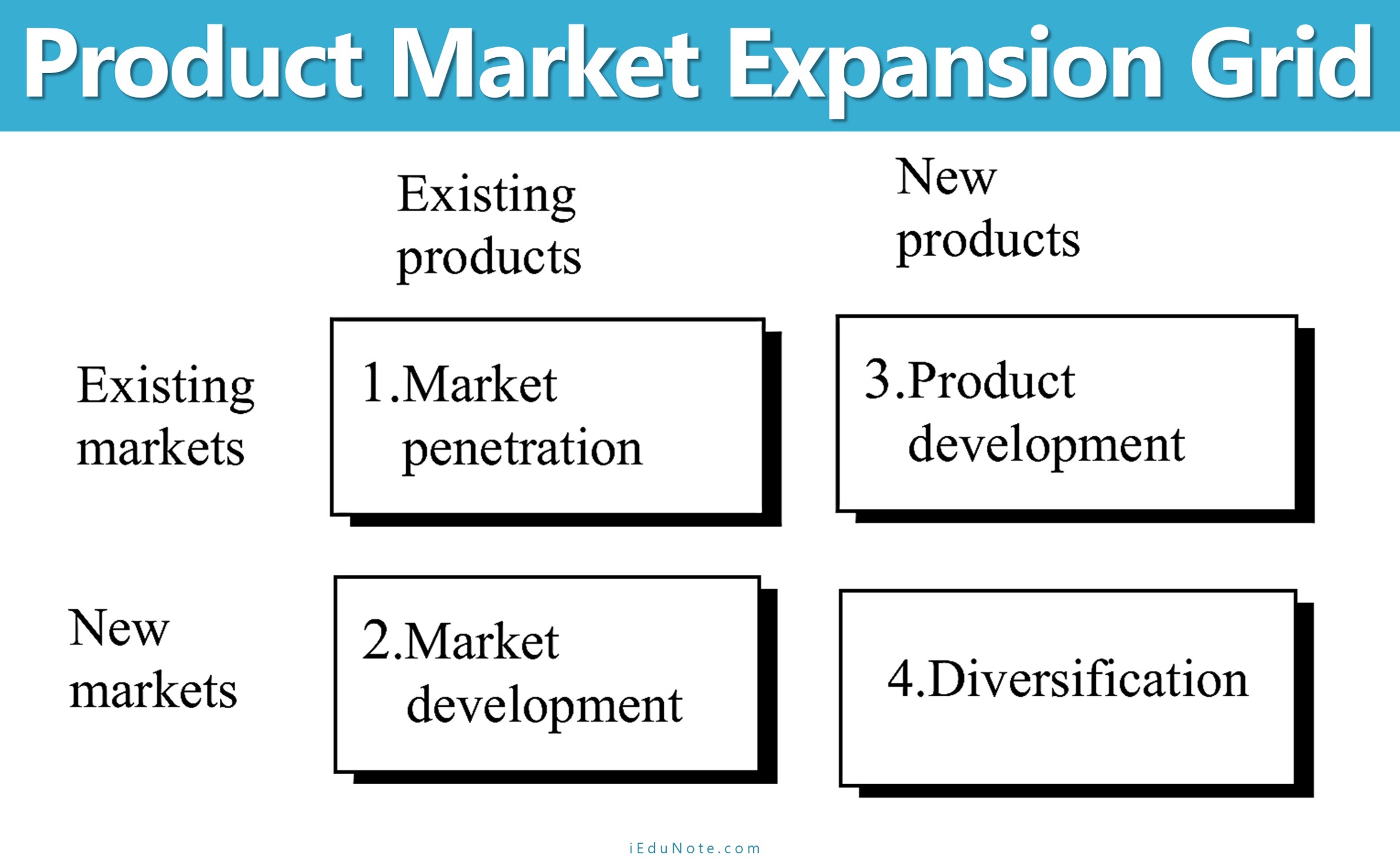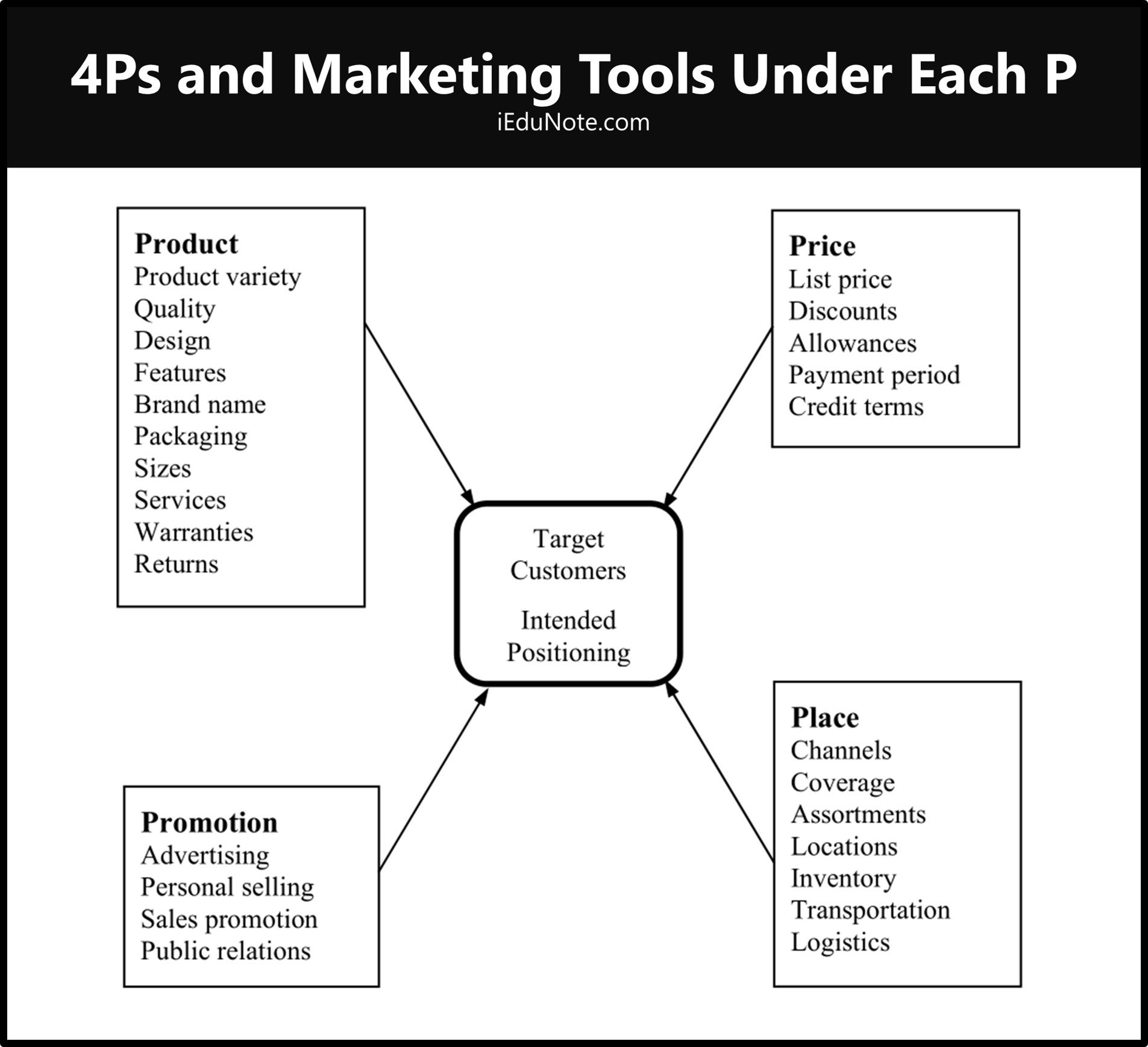In addition to evaluating current businesses, designing the business portfolio aims at finding businesses and products the company should consider in the future. For this purpose, management uses a device called product-market expansion grid.
Learn Product-Market Expansion Grid
What is Product-Market Expansion Grid?
The product/ market expansion grid is a portfolio-planning tool for identifying company growth opportunities through market penetration, market development, product development, or diversification.
Market Penetration
Market penetration is a strategy for company growth by increasing sales of current products to current market segments without changing the product in any form.
Fundamentally, management would like to increase usage by current customers and attract customers of other competing brands.
Market Development
Market development is a strategy for company growth by identifying and developing new market segments for current company products. For this purpose, management can review new demographic and geographical markets.
Product development
Product development strategy for company growth by offering modified or new products to current market segments. This involves developing the product concept into a physical product to assure that the product idea can be turned into a workable product.
Diversification
Diversification is a strategy for company growth by starting up or acquiring businesses outside the company’s current products and markets.
Beyond evaluating current businesses, designing the business portfolio involves finding businesses and products the company should consider in the future.
Companies need growth if they are to compete more effectively, satisfy their stakeholders, and attract top talent. “Growth is pure oxygen,” states one executive.
“It creates a vital, enthusiastic corporation where people see genuine opportunity. . . . In that way, growth is more than our single most important financial driver; it’s an essential part of our corporate culture.
At the same time, a firm must be careful not to make growth itself an objective. The company’s objective must be “profitable growth.”

Marketing has the main responsibility for achieving profitable growth for the company. Marketing must identify, evaluate, and select market opportunities and lay down strategies for capturing them. One useful device for identifying growth opportunities is the product-market expansion grid, shown in Figure.
We apply it here to Starbucks.
First, Starbucks management might consider whether the company can achieve deeper market penetration —making more sales to current customers without changing its products.
It might add new stores in current market areas to make it easier for more customers to visit. Improvements in advertising, prices, service, menu selection, or store design might encourage customers to stop by more often or to buy more during each visit.
For example, Starbucks recently began adapting its menu to local tastes around the country.
| In the South, where customers tend to come later in the day and linger for a bit, [such tailoring] meant adding more appealing dessert offerings, as well as designing larger, more comfortable locations. [In Atlanta, Starbucks] opened bigger stores with such amenities as couches and outdoor tables, so that people would feel comfortable hanging out, especially in the evening. . . . Building on its Atlanta experience, Starbucks is tailoring its stores to local tastes around the country. That’s why you find café au lait as well as toasted items in New Orleans, neither of which is available elsewhere in the country. (Bagel sales in New Orleans tripled once Starbucks began toasting them.) Or why the coffee cake is featured in the Northeast, where it’s more popular.12 |
It is Clear that Starbucks would like to increase patronage by current customers and attract competitors’ customers to Starbucks shops.
Second, Starbucks management might consider possibilities for market development—identifying and developing new markets for its current products.
For instance, managers could review new demographic markets—such as senior consumers or ethnic groups—to see if new groups could be encouraged to visit Starbucks coffee shops for the first time or to buy more from them. Managers also could review new geographical markets.
Starbucks is now expanding swiftly into new U.S. markets, especially in the Southeast and Southwest. It is also developing its international markets, with stores popping up rapidly in Asia, Europe, and Australia.
Third, management could consider product development—offering modified or new products to current markets.
For example, Starbucks is increasing its food offerings to bring customers into its stores during lunch and dinner hours and to increase the amount of the average customer’s sales ticket.
The company is also partnering with other firms to sell coffee in supermarkets and to extend its brand to new products, such as coffee ice cream (with Breyer’s) and bottled Frappuccino drinks (with PepsiCo).
Fourth, Starbucks might consider diversification. It could start-up or buy businesses outside of its current products and markets.
For example, Starbucks is testing two new restaurant concepts—Café Starbucks and Circadia—to offer new formats to related but new markets.
In a more extreme diversification, Starbucks might consider leveraging its strong brand name by making and marketing a line of branded casual clothing consistent with the “Starbucks experience.”
However, this would probably be unwise. Companies that diversify too broadly into unfamiliar products or industries can lose their market focus, something that some critics are already concerned about with Starbucks.

